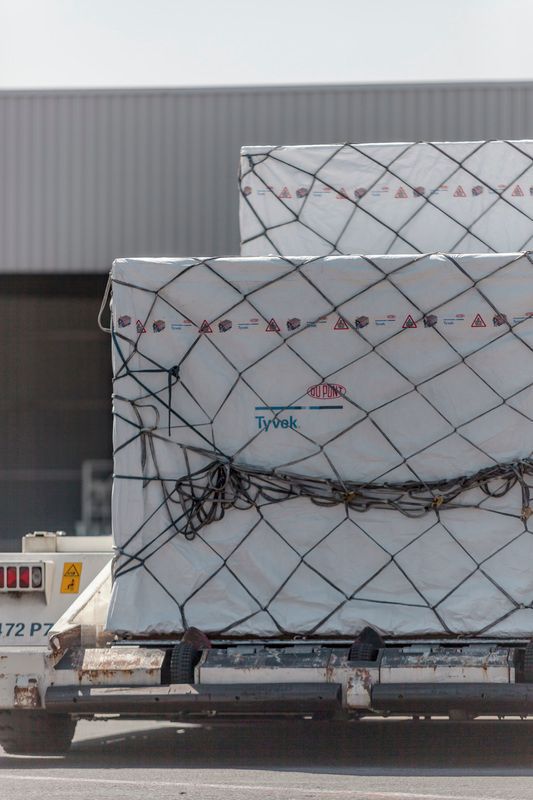Why Reflectivity Matters for Cargo Covers
The most critical time for a temperature-sensitive pharmaceutical product during transport is at the airport when the pallet is being transferred from cold storage to the aircraft or vice versa. Often referred to as “tarmac time,” this process can take anywhere from 10 minutes to three hours, depending on the size and logistics of the airport, including customs procedures.
According to the International Air Transport Association (IATA), 57% of all temperature excursions happen at the airport. And many shipments typically pass through multiple airports before the product reaches its destination.
Pharmaceutical companies must take steps to protect their products from these cold chain breaks during transport to ensure product potency and stability, and to maintain good distribution practice (GDP) compliance. Failure to do so can result in the invalidation of the license to sell the products, particularly vaccines and biological products.
Understanding the Impact of Solar Energy during Tarmac Time
A widely held misconception about temperature excursions during tarmac time is that the outside air temperature is what determines heat flow into the pallet. But the fact is that the outer surface temperature of the load is what really drives heat into the pallet.
So while it is clear that air temperatures on tarmacs in the Middle East and sub-tropical countries can often reach 40°C (104°F) or higher, what is even more important to consider is that the intense sunshine can raise the surface temperature of the load far above the surrounding air temperature very quickly, increasing heat flow into the load well beyond the expected rate. This also means that even in temperate regions where the air temperature may be a comfortable 20°C (68°F), strong sunshine can quickly raise the surface of the load to a much higher temperature, which can also be transmitted into the product and lead to an unexpected excursion.
There are two ways to reduce solar heating of cargo on the tarmac: insulation and reflection.
When sunlight hits a non-reflective surface, it is absorbed and that energy is converted to heat, raising the surface temperature. Insulation slows the movement of heat inward to help the inside stay cool. For the same type of insulation, a thicker layer is more effective.
In contrast, when sunlight hits a reflective surface, less energy is absorbed, the surface temperature stays low and inward heat flow is reduced. Reflective materials can be very thin and flexible while still providing better solar heat reduction than insulation.

It is important to note that when we refer to reflectivity here, we do not mean the same thing as “shiny” or “glossy.” A black object can appear shiny if you can see an image in its smooth surface; however, it is black because it absorbs most of the light that falls on it.
On the other hand, high reflectivity for visible light typically produces a white color, and the unique structure of Tyvek® gives it a brilliant white color because of its very high reflectivity. You don’t see an image in the surface of Tyvek® because the light is scattered back in random directions, but most of the light is still scattered back.
Scientific Solution for Tarmac Time—Tyvek® Cargo Covers
Tyvek® Cargo Covers are designed to reflect >90% of incoming solar energy. The contents of a load will eventually reach the outside air temperature given enough exposure time but the internal temperature will not see the rapid rise caused by the baking sun heating the surface far above the outside air temperature.
And, because Tyvek® is breathable, it allows faster recovery when the load is returned to cold storage. This breathability also permits the controlled escape of humidity, reducing the formation of condensation, which minimizes the risk of water damage to product, packaging and labels.
Unlike many competitive products that rely on a thick insulation layer, the fact that Tyvek® is reflective means that Tyvek® Cargo Covers can be thinner, flexible and lightweight. As a result, Tyvek® Cargo Covers are easier to install, saving warehouse space, time and money. Perhaps more importantly, ease of installation translates to streamlined operations and improved efficiency.
Learn More
To learn more about how Tyvek® Cargo Covers—an exclusive technology patented by Blueye®—can protect your pharmaceutical products in transit and streamline your operations, visit Tyvek® Cargo Covers for Pharmaceuticals or contact your local DuPont representative.